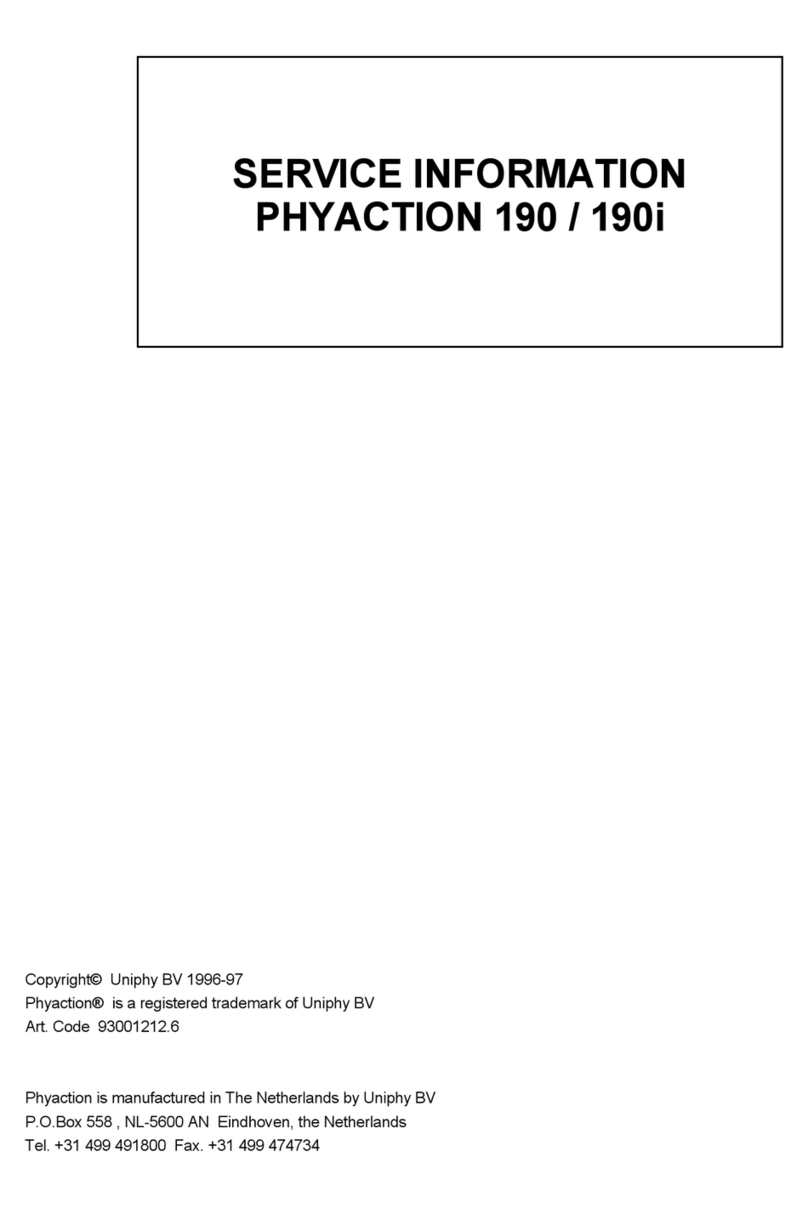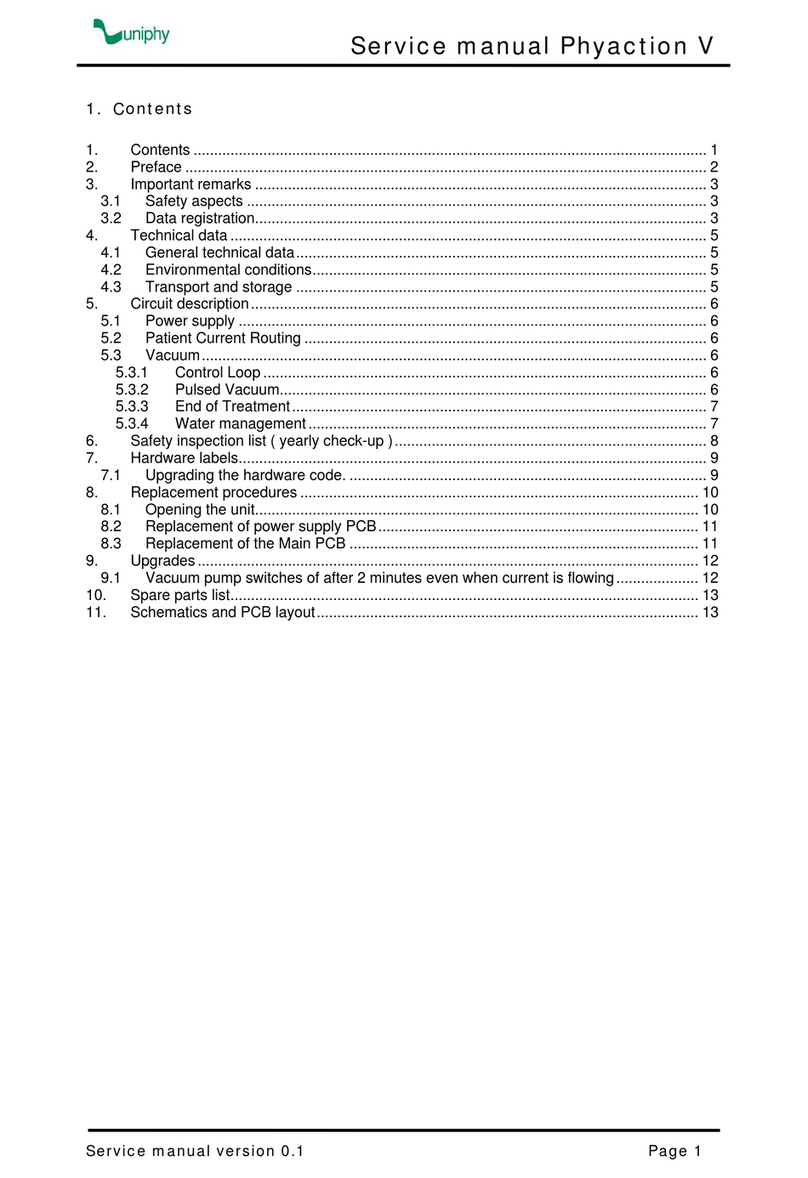
Service Information Phyaction 740 & 790-series Page 4
The yellow lamps5beside the output connectors for the ultrasound heads and the laser probes illuminate
respectively as soon as ultrasound or infra-red power is emitted. The yellow lamp beside the current
output6illuminates as soon as 5mAeff of current is exceeded.
1.4.3 Infra-red sensor
Infra-red laser beams are invisible. In order to check that the laser probe is operating correctly, a sensor7
is built in. This sensor is located to the right above the current output socket. Using application no. 903
the infra-red laser power can be tested. If the laser probe is held in front of the sensor, the measured
peak power will appear on the display. We advise you to perform such a measurement periodically, for
example monthly. When performing a treatment using laser therapy, the infra-red sensor can be used to
test whether laser energy is being emitted through the probe.
1.4.4 Knobs
On the front and to the right there are three potentiometers. When you turn these knobs fully anti-
clockwise, you will detect a click indicating that they are in the zero position. From the top to the bottom
the knobs have the following functions:
- Using the top knob8you can adjust the laser energy in Joules. The treatment time changes
automatically.
- The middle knob9is used to adjust the peak intensity in Watt/cm2for ultrasound.
- The bottom knob10 is the dose regulator for electrotherapy.
1.4.5 Push-buttons
- The blue buttons11 have a function which is different for each program and each menu. The display
indicates clearly whether the buttons have a function and, if so, which function.
- The black buttons ¿or À12 are used to increase or decrease the value of a parameter which you
have previously selected.
- The left hand yellow button13 is used to return to the main menu. If you hold down this button for a
few seconds you will arrive in a special menu STANDARD SETTINGS.
- Once you have selected a program, the right hand yellow button14 quickly and easily provides you
with further options of the selected program. Using this button you can call up the applications from
the main menu.
- Using the green button15 you can call up the special memory function. You can store, retrieve and
change 250 different treatments.
1.4.6 Output connectors and sockets on the front
The equipment is fitted with a number of connectors for the following functions:
- The two connectors16 on the far left are used to connect the laser probe(s). It does not matter to
which of the two connectors the laser probe(s) is/are connected.
- The two middle connectors17 are for connecting the ultrasound head(s). Here too it makes no
difference to which connector the head(s) is/are connected. You can connect two heads at the same
time.
- The two safety sockets18 on the far right are used for connecting the electrode cables during
electrotherapy. For combination therapy you can only use the socket on the far right, since in this
case the other socket is without current. In this case the metal treatment surface of the ultrasound
head forms the other electrode.
1.4.7 Key switch
When you want to switch on a program utilizing laser, you should turn the key switch19 to the right. To





























